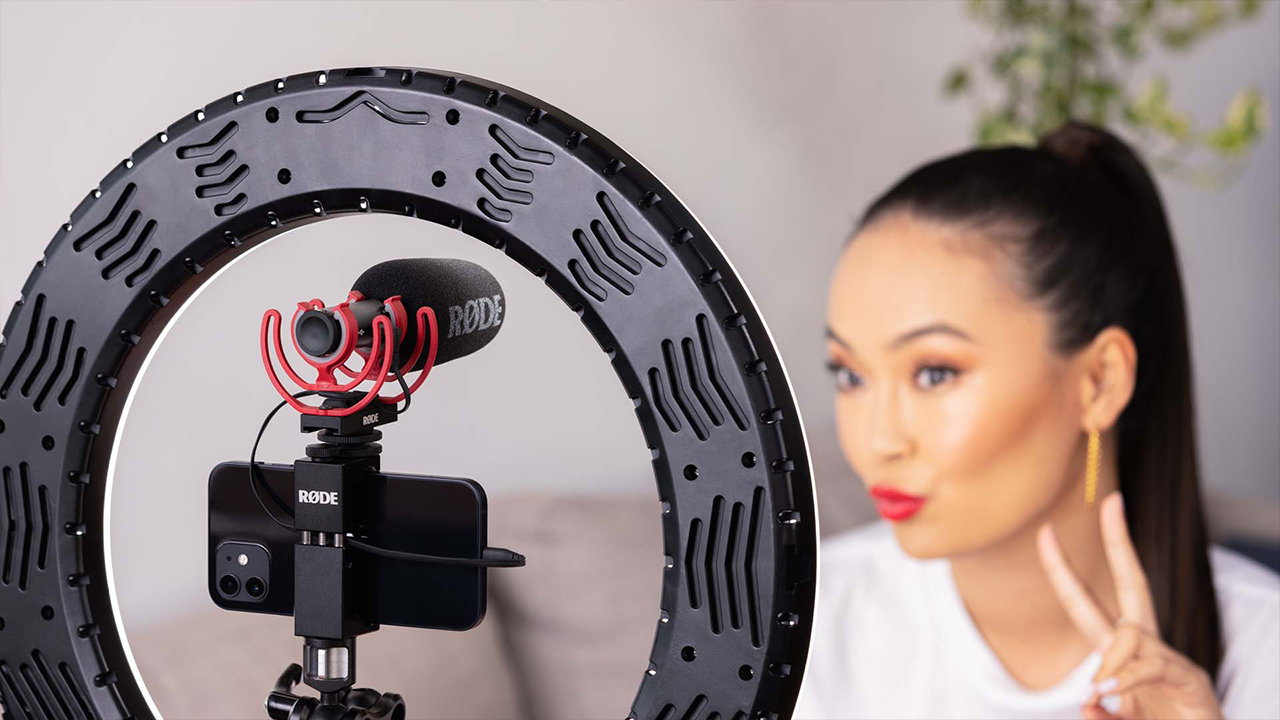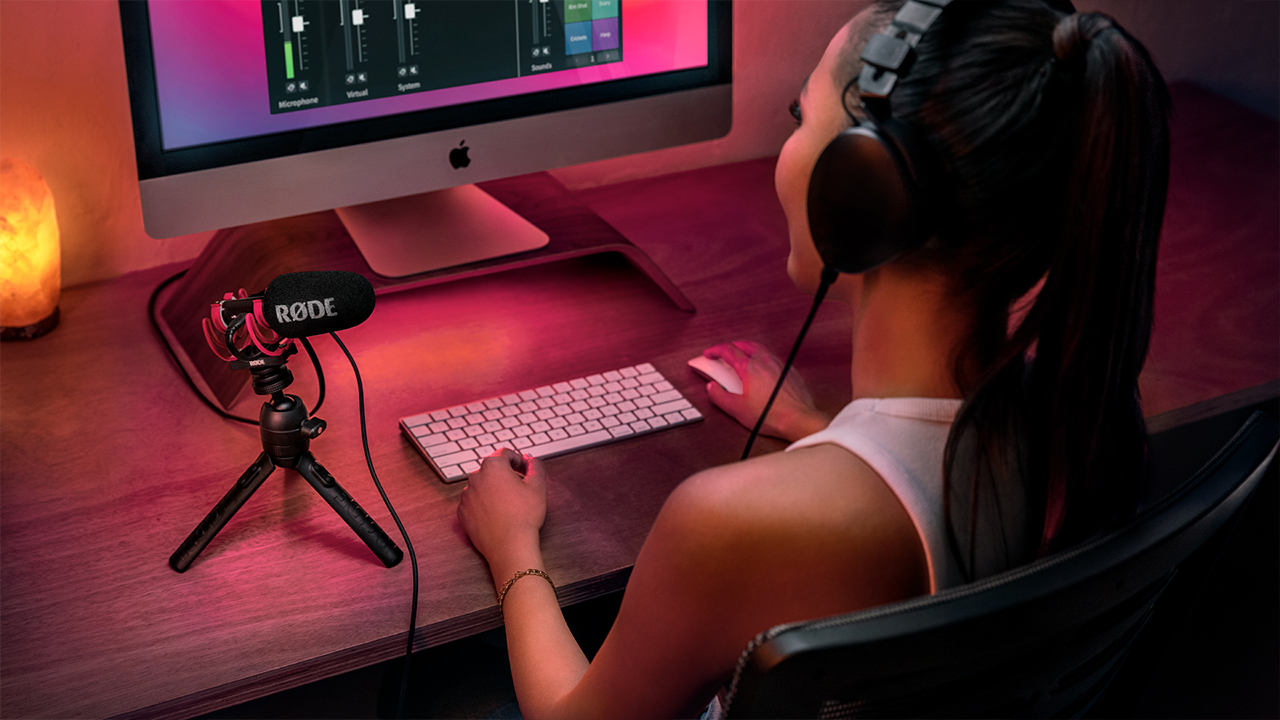The VideoMic GO II vs VideoMic NTG: Which One Is Right For You?
The VideoMic GO II and VideoMic NTG are the first two additions to our next-generation VideoMic range and offer a plethora of revolutionary features that deliver not only impeccable sound quality, but incredible versatility as well.
In this post, we'll look at the similarities and differences between these two microphones to help you decide which is best for you.

SIZE AND WEIGHT
The VideoMic GO II and VideoMic NTG are both incredibly lightweight microphones, which make them ideal for use on a camera, in a mobile recording rig (such as with the RØDE Tripod 2 and Phone Cage), or on a desktop or boompole.
The VideoMic GO II is lighter than the VideoMic NTG at just 89 grams (including the shockmount and windshield) versus 154 grams. It is also shorter; however, the extra length of the VideoMic NTG gives it an edge, which we’ll explain in the next section.

The VideoMic GO II is ultra-lightweight and compact, making it great for use with smartphones
INCLUDED ACCESSORIES
Both microphones come with high-quality accessories so you can get recording right away. This includes a professional shockmount for reducing any vibrations in the microphone caused by knocks and bumps. There is also a handy sliding rail for adjusting the position of the microphone backwards (in case it is protruding into frame) or forwards (if it is blocking the viewfinder), plus a 3/8-inch thread for mounting onto a boompole, tripod, microphone stand or studio arm like the PSA1+.
Both microphones also come with a high-quality foam windshield for reducing wind noise and plosives, with furry windshields (the WS11 and WS12) for recording in high-wind environments available separately.
Cables for connecting to devices with a 3.5mm input are also supplied (note: additional cables are required for connecting to mobile devices or computers via USB – USB-C devices: SC16, SC17, SC18; iOS devices with a Lightning port: SC15, SC19).

Both the VideoMic GO II and VideoMic NTG come with a professional shockmount and windshield
SOUND QUALITY
The VideoMic GO II and VideoMic NTG both feature our revolutionary annular line tube technology, which was first developed for the NTG5 professional shotgun microphone. This innovative acoustic design, which utilises circular perforations along the line tube instead of linear slots, delivers incredible transparency with a natural off-axis response and a very focused sound.
The VideoMic NTG has a longer line tube, which results in improved directionality, whereas the VideoMic GO II has a slightly wider pickup pattern.

With its longer line tube, the VideoMic NTG offers better directionality than the shorter VideoMic GO II
AUDIO OUTPUTS
The VideoMic GO II and VideoMic NTG are also similar in terms of audio outputs, with one key difference. Both feature a USB audio output for recording directly to mobile devices and computers. This is one of the defining features of the next-generation VideoMic range, making them incredibly versatile microphones.
They also both feature a 3.5mm analog output; however, the VideoMic NTG has an auto-sensing output, making it compatible with both TRS or TRRS connectors, so it can be plugged directly into smartphones, tablets and other devices with TRRS input.
The 3.5mm output on both microphones can be used for headphone monitoring, with the VideoMic NTG being able to accept headphones with either a TRS or TRRS connector.

Both the VideoMic GO II and VideoMic NTG feature a 3.5mm analog output for connecting to cameras and a USB output for connecting to mobile devices and computers
POWERING THE MICROPHONES
When it comes to power, the VideoMic GO II and VideoMic NTG are quite different. The VideoMic GO II requires no batteries to operate as it features our patent-pending dual plug-in power operation, meaning that it can be powered by either your camera’s 3.5mm audio input or via USB.
The VideoMic NTG can also be powered via USB, and it features a rechargeable internal lithium-ion battery that provides over 30 hours of continuous use with a camera.

The VideoMic GO II is plug-in powered, so it does not need any batteries to operate
ON-BOARD CONTROLS
This is where these microphones really start to differ. The VideoMic NTG offers a lot more in terms of on-board control, whereas the VideoMic GO II is more straightforward. With the VideoMic NTG, you have hands-on control over the output level via its unique infinitely variable gain control (which doubles as a headphone level control), as well as a high-pass filter, high-frequency boost, -20dB pad, and a safety channel all accessible on-board.
The VideoMic GO II also gives you access to this same powerful DSP (minus the safety channel feature), but only when connected to a USB host and using RØDE Connect or RØDE Central. When connected to a camera or device via the 3.5mm output, it operates as a simple plug-and-go on-camera microphone (much like the original VideoMic GO), whereas with the VideoMic NTG, you can use these extra features with any recording device.

The VideoMic NTG gives you complete hands-on control no matter what device you're recording with
RØDE APP COMPATIBILITY
Both the VideoMic GO II and VideoMic NTG are fully compatible with RØDE Connect for recording high-quality podcasts with absolute ease.
Only the VideoMic GO II is compatible with RØDE Central, as this is required to control the DSP.
Both are compatible with RØDE Reporter, though you cannot control the VideoMic NTG's DSP with the app (as this isn't necessary).

Both the VideoMic GO II and VideoMic NTG are compatible with RØDE Connect for recording high-quality podcasts with ease
In summary, both microphones are excellent choices for a wide range of recording applications.
The VideoMic NTG’s directionality, on-board controls (including the safety channel), and ability to use these features with a camera via the 3.5mm output may make it preferable for you. Whereas the VideoMic GO II is lighter, more compact, and simpler to use (with no controls or battery required), but still very powerful when used over USB.